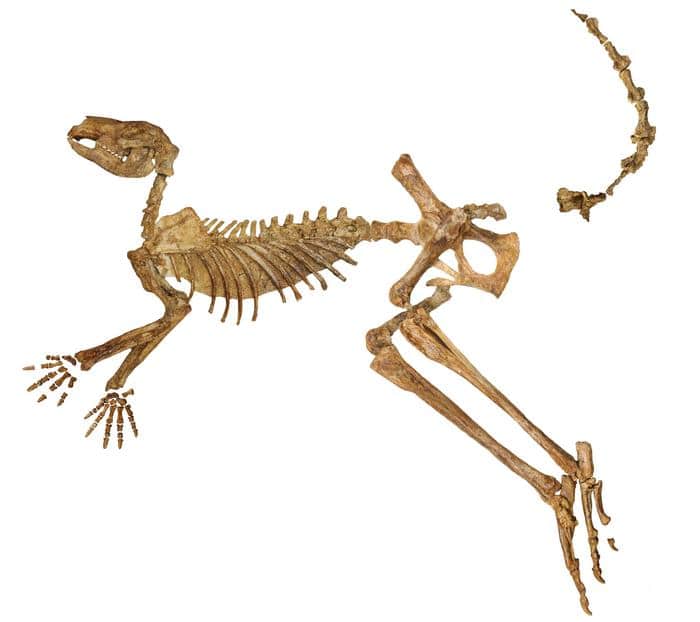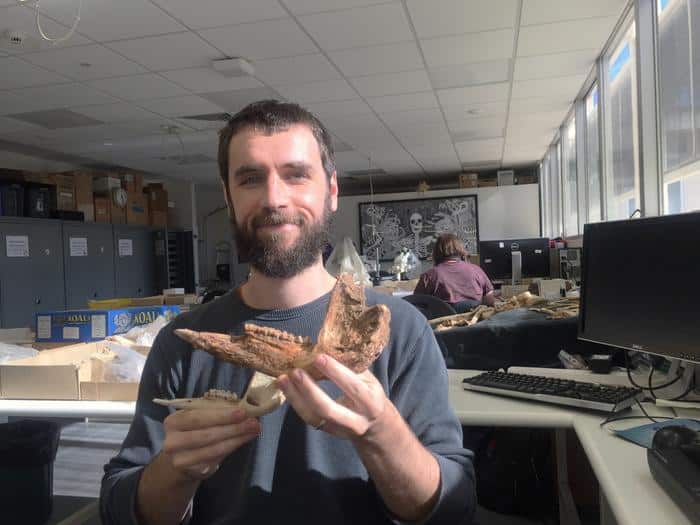
Researchers from Flinders University have described three new species of giant fossil kangaroos, offering new insights into their diverse characteristics and habitats. One of them is about double the size of the iconic red kangaroo (Macropus rufus). These findings are the result of the most comprehensive study of Protemnodon to date, a genus of ancient kangaroos that roamed the landscapes of Australia and New Guinea from about 5 million years ago to as recently as 40,000 years ago.
Diversity Among Kangaroo Giants

Protemnodon was a genus of prehistoric marsupials that belonged to the family Macropodidae, which includes modern kangaroos and wallabies. These ancient creatures were significantly larger than most of the kangaroos we are familiar with today. In fact, they were among the largest marsupials of their time.
However, it’s not accurate to represent Protemnodon as an oversized kangaroo. Some were relatively small, comparable to modern kangaroos, while others were indeed giants. Some hopped, others walked on all four legs.
“Protemnodon are interesting because they’re so closely related to the large living kangaroos, the iconic red kangaroo and the grey kangaroos. The fact that despite this, they are so diverse in their shape and size and method of hopping, is very intriguing to me,” Isaac Kerr, a paleontologist at Flinders University and lead author of the new study, told ZME Science.
The first Protemnodon was described by none other than Sir Richard Owen in the 19th century. If the name doesn’t ring the bell, he’s the paleontologist that coined the term ‘dinosaur’. Owen described six species of Protemnodon to the best of his ability with the limited tools and knowledge of his time. Subsequent research showed that not all of his descriptions, based on fossil teeth, were of distinct species.
Over the years, thousands of Protemnodon fossils have been found scattered across Australia. This suggests that the genus was quite common, but despite the wealth of fossils, most of these findings were not very well understood.
For their new study, Isaac Kerr and colleagues at Flinders set about the arduous task of sifting through thousands of Protemnodon teeth and bones spread across 14 museum collections in four countries.
“It took me nearly two years and about seven travel grants to see, photograph and 3D-scan all the fossils in the genus, let alone to do all the research,” Kerr said.
New insight into an ancient kangaroo linage

This extensive cataloging allowed the researchers to identify three new species based on fossils unearthed from Lake Callabonna in arid South Australia. The star of this new batch is Protemnodon viator, a hefty kangaroo that weighed up to 170 kilograms (375 pounds) — double the size of today’s largest red kangaroo. However, this was not the largest kangaroo-like marsupial. This distinction belongs to the previously described Procoptodon goliah, an absolute unit that weighed about 200 to 240 kilograms (440–530 pounds).
The other two newly introduced kangaroos are Protemnodon mamkurra and Protemnodon dawsonae.
Protemnodon mamkurra was likely quadrupedal, walking on all fours. This contrasts sharply with its relatives, suggesting a more diverse adaptation strategy among these ancient kangaroos. Unlike its nimble relatives, P. mamkurra might have moved more slowly, bounding on four legs or hopping on two only when necessary. The name, meaning ‘great kangaroo’, was selected by elders of the Boandik indigenous community.
Protemnodon dawsonae is more of a mystery due to the poorer fossil record. The researchers believe it was a mid-speed hopper akin to the swamp wallaby.
The study also found that Protemnodon species were far more varied in size, shape, and locomotion than previously recognized. One of Sir Owen’s described species, Protemnodon anak, was found to be correctly assessed. The holotype of this species is found at the Natural History Museum in London.
“There are seven species of kangaroo in the genus Protemnodon, and these differ from each other to a surprising degree in terms of their limb proportions and their method of movement. The results aren’t surprising, but they are very motivating. I really want to know more about all of these animals,” Kerr said.
“The variation in size likely comes down to their different habitats. Today, the largest kangaroos live in open environments, where they travel distances for food and water, and move in large groups called mobs. Smaller kangaroos are found in more densely forested environments, and are usually solitary animals or only in small groups. The same seems to have applied to Protemnodon; the largest species, P. viator, lived in open, arid central Australia, in many of the same areas that the big red kangaroos still do.”
The diversity of Protemnodon suggests that it was quite ecologically successful. But by around 40,000 years ago, it went extinct despite the diverse range of habitats and adaptations employed by the members of this genus.
“Protemnodons are so closely related and fairly similar to living kangaroos, so why did only Protemnodon go extinct? They were also very widespread and lived in all kinds of different environments, from arid grasslands to dense forests to alpine herb fields. What could have wiped them out in so many different places?”
“At present it’s thought to have been a combination of changing climate in the past million years, changes to bushfire regimes and habitat structure following the arrival of the First Australians around 60,000 years ago, and possibly changes to the ecological pressures with an additional predator (i.e. humans) hunting in the landscape. These questions still need answering, but may be easier to answer now that our paper is out in the world,” Kerr said.
The findings appeared in the journal Megataxa.



